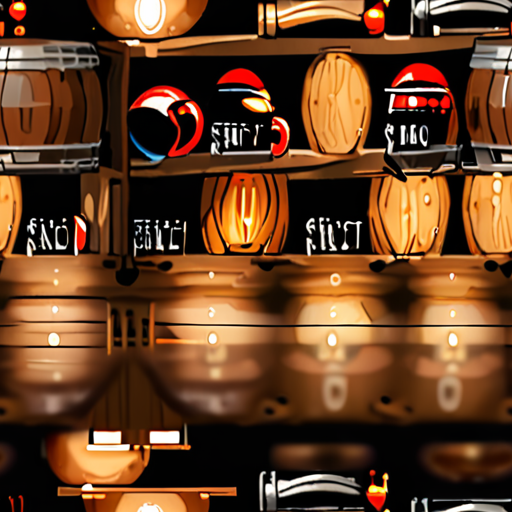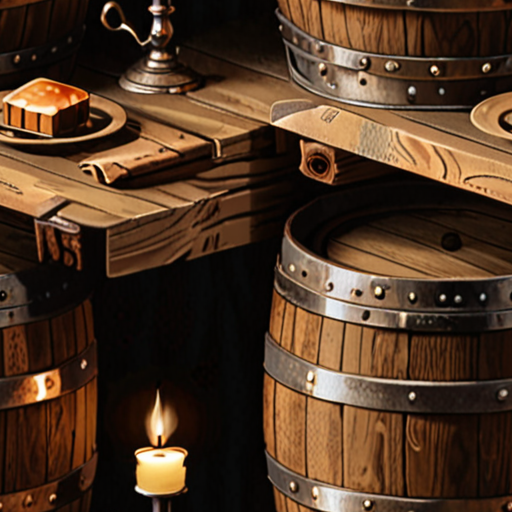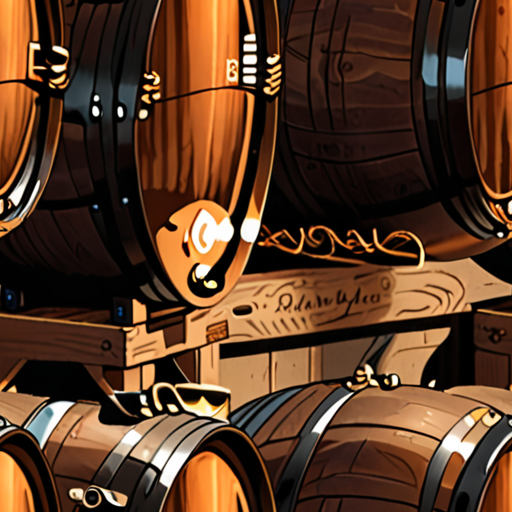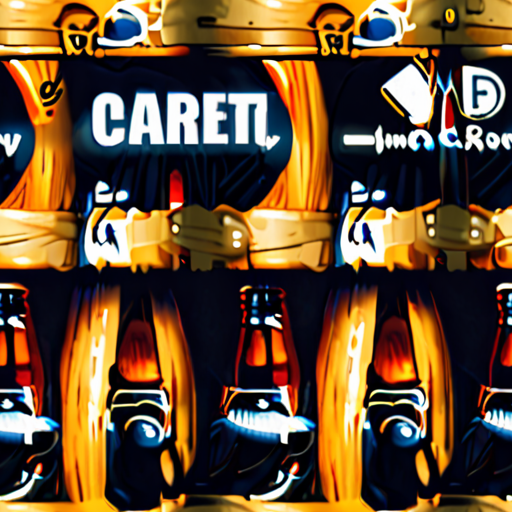For many beer enthusiasts, the perfect pour is not just about the taste, but also about the experience – and what better way to elevate that experience than by creating the ultimate craft beer cellar? Whether you’re a seasoned brew connoisseur or just starting to explore the world of craft beer, building a beer cellar can be a game-changer, allowing you to store and age your favorite brews to perfection. But what exactly is a beer cellar, and how do you build one that will take your beer-drinking adventures to new heights?

What is a Beer Cellar?
A beer cellar is a storage space specifically designed for aging and storing beer, typically located below ground level. It’s often associated with traditional German pubs, known as rathskellers, which feature a cozy atmosphere and a vast selection of beers. In modern times, beer cellars have become increasingly popular among craft breweries and beer enthusiasts who appreciate the art of beer aging and maturation.
Types of Beer Cellars
There are several types of beer cellars, each serving a unique purpose:
- Cooler Cellars: These cellars are designed to store beer at cooler temperatures, typically between 40°F and 55°F (4°C and 13°C), ideal for aging lagers and pilsners.
- Temperature-Controlled Cellars: These advanced cellars allow for precise temperature control, enabling brewers to age beers at specific temperatures for optimal flavor development.
- Humidity-Controlled Cellars: Some cellars incorporate humidity control systems to maintain optimal moisture levels, crucial for aging certain beer styles, such as Belgian ales.
Benefits of Beer Cellars
Beer cellars offer numerous benefits, including:
- Optimal Storage Conditions: Beer cellars provide a stable environment for beer storage, minimizing exposure to light, heat, and vibrations that can affect beer quality.
- Flavor Development: Aging beer in a controlled environment allows flavors to mature and develop, resulting in complex and nuanced taste profiles.
- Increased Shelf Life: Properly stored beer can last longer, reducing waste and extending shelf life.
Designing a Beer Cellar
When designing a beer cellar, consider the following factors:
- Temperature Control: Install a reliable temperature control system to maintain consistent temperatures.
- Humidity Control: Incorporate a humidity control system to maintain optimal moisture levels.
- Air Circulation: Ensure adequate air circulation to prevent stagnant air and promote healthy yeast growth.
- Light Protection: Use UV-resistant materials and blackout curtains to shield beer from light damage.
Best Practices for Beer Cellaring
To get the most out of your beer cellar, follow these best practices:
- Monitor Temperature and Humidity Levels Regularly.
- Store Beer in Dark Glass Bottles or Cans to Prevent Light Damage.
- Avoid Over-Aging Beer, as it Can Result in Unpleasant Flavors.
- Keep Beer Away from Strong Smells and Odors.
The 3:30300 Rule for Beer
When it comes to storing beer, freshness matters, and understanding the 3:30300 rule can help you enjoy your favorite brews at their best.
- Understanding the Rule: The 3:30300 rule states that beers stored for 3 days at 90°F, 30 days at 72°F, or 300 days at 38°F will see the same level of oxidation that can affect the flavor and aroma of your beer.
- Factors Affecting Oxidation: Temperature, storage conditions, and packaging play significant roles in determining how quickly beer oxidizes. Proper storage and handling can minimize oxidation and preserve the beer’s flavor and aroma.
- Importance of Freshness: Freshness is crucial for beer, as it affects the overall taste, smell, and mouthfeel. Storing beer under optimal conditions helps preserve its character and ensures a better drinking experience.
- Best Practices for Beer Storage: To keep your beer fresh, store it in a cool, dark place, away from direct sunlight and heat sources. Keep the bottles or cans upright to prevent sediment from settling, and consider investing in a beer fridge or cooler for optimal storage conditions.
- Beer Styles and Aging: Some beer styles benefit from aging, while others are best consumed fresh. Understanding the characteristics of different beer styles can help you determine whether to age or drink them immediately.
- Conclusion: By following the 3:30300 rule and adopting best practices for beer storage, you can enjoy your favorite brews at their best and appreciate the nuances of different beer styles.
At The Goods On Tap , we’re passionate about sharing knowledge and expertise to help you navigate the world of craft beer. Whether you’re a seasoned enthusiast or just starting your journey, our resources and guides are designed to educate and inspire.
For more information on beer storage, aging, and other topics, explore our website and discover the rich world of craft beer.

What is Beer Sommelier Called?
A beer sommelier, also referred to as a cicerone in the United States, is a trained professional specializing in the service and knowledge of beer.
- The term “beer sommelier” was coined to describe individuals who possess extensive knowledge of beers, much like a traditional wine sommelier.
- Cicerones, on the other hand, are certified professionals who have demonstrated expertise in beer selection, pairing, and service.
Key Responsibilities of a Beer Sommelier:
- Developing and maintaining a deep understanding of various beer styles, ingredients, and production methods.
- Selecting and recommending beers to complement food pairings and enhance dining experiences.
- Providing exceptional customer service and educating patrons about beer options and characteristics.
- Staying up-to-date with industry trends, seasonal releases, and emerging beer styles.
Training and Certification:
To become a certified cicerone, individuals typically undergo rigorous training and pass a series of exams administered by the Cicerone Certification Program.
- The program offers various levels of certification, ranging from Certified Beer Server to Master Cicerone.
- Each level requires a deeper understanding of beer knowledge, tasting skills, and industry expertise.
Industry Recognition:
Beer sommeliers and cicerones play a vital role in promoting beer culture and appreciation within the hospitality industry.
- Many restaurants, bars, and breweries employ certified cicerones to elevate their beer programs and provide exceptional customer experiences.
- These professionals contribute to the growth and development of the craft beer industry through education, advocacy, and innovation.
Conclusion:
As the craft beer industry continues to evolve, the importance of beer sommeliers and cicerones will only continue to grow.
By developing a deeper understanding of beer styles, ingredients, and production methods, these professionals can provide unparalleled service and elevate the beer-drinking experience for enthusiasts and novices alike.

Cellaring Beer: How Long Can You Store Beer?
When it comes to aging beer, many factors come into play, including the type of beer, storage conditions, and personal preference.
- Stout beers : These dark, roasted beers typically benefit from a year or two in the cellar, with some varieties enjoying longer aging periods. However, pushing beyond 2-3 years may result in a loss of flavor and aroma.
- Other beer styles : IPAs, pale ales, and lagers generally don’t age well and are best consumed fresh. In contrast, Belgian-style quadrupels and barley wines can develop complex flavors with extended aging, often benefiting from 5-10 years or more in the cellar.
- Storage conditions : Temperature, humidity, and light exposure significantly impact beer’s aging process. A cool, dark place with consistent temperatures between 45°F and 55°F (7°C and 13°C) is ideal for most beers.
- Monitoring beer condition : Regularly check beer’s appearance, smell, and taste to determine its optimal drinking window. Signs of spoilage, such as off-flavors, mold, or sediment, indicate it’s time to consume the beer.
While there’s no one-size-fits-all answer to how long beer can be cellared, understanding the characteristics of different beer styles and storing them under optimal conditions can help you appreciate the nuances of aged beer.
Best Practices for Cellaring Beer:
- Store beer upright : Prevent sediment from accumulating at the bottom of the bottle or can.
- Keep beer away from light : Light can cause beer to degrade, affecting its flavor and aroma.
- Maintain consistent temperature : Avoid sudden changes in temperature, which can disrupt the aging process.
- Monitor beer regularly : Check for signs of spoilage and consume beer before it goes bad.
Additional Resources:
For more information on beer aging and cellaring, visit our Beer Aging and Cellaring guide, which covers topics such as beer style-specific aging recommendations, storage tips, and troubleshooting common issues.
Is 25 Year Old Beer Still Good?
When it comes to beer, freshness matters, but does age necessarily mean spoilage? In most cases, a well-sealed beer can remain safe to drink for several years.
- The primary concern with aged beer is not safety, but rather flavor and quality. Over time, beers can develop off-flavors, become stale, or lose their carbonation.
- However, if stored properly in a cool, dark place, away from light and heat, many beers can retain their character and quality for extended periods.
Factors Affecting Beer Age
Several factors influence how well a beer ages:
- Type of beer: Some styles, like stouts and porters, tend to hold up better over time due to their robust flavors and lower hop bitterness.
- Brewing methods: Beers brewed with traditional techniques and high-quality ingredients may age more gracefully.
- Storage conditions: Proper storage in a cool, dark environment helps preserve the beer’s flavor and aroma.
- Sealing and packaging: Beers packaged in glass bottles or cans with tight seals are less likely to degrade quickly.
Signs of Spoilage
While most beers won’t make you sick, they can still go bad. Look out for these signs:
- Lack of carbonation: Flat beer is often a sign of spoilage or poor storage.
- Off-flavors: Unpleasant tastes or aromas can indicate degradation.
- Sediment or mold: Visible particles or growth on the surface suggest contamination.
What to Do with Old Beer
If you’ve discovered an old beer that’s gone flat or developed off-flavors, consider the following options:
- Drink it anyway: If the beer is still safe to consume, you might enjoy it despite its changed character.
- Use it in cooking: Old beer can be a great addition to recipes, adding depth and complexity.
- Dispose of it safely: If the beer has spoiled or shows signs of contamination, discard it responsibly.
Conclusion is Not Needed

Does Beer Go Bad After 5 Years?
When it comes to beer shelf life, many people wonder whether their favorite brew will remain fresh and flavorful after a certain period.
- The general consensus among brewers and beer enthusiasts is that beer can last for several years if stored properly.
- However, factors such as storage conditions, packaging, and type of beer play a significant role in determining its longevity.
Factors Affecting Beer Shelf Life:
- Storage Conditions: Beer should be stored in a cool, dark place, away from direct sunlight and heat sources.
- Packaging: Bottled beers typically have a longer shelf life compared to canned or draft beers.
- Type of Beer: Different types of beer have varying levels of acidity and carbonation, which affect their shelf life.
How Long Does Beer Last?
While there’s no definitive answer to how long beer lasts, most experts agree that:
- Bottled beers can last for 2-5 years, depending on the type and storage conditions.
- Canned beers usually have a shorter shelf life, lasting around 1-2 years.
- Draft beers typically have the shortest shelf life, lasting only a few weeks to months.
Signs of Spoilage:
If you notice any of the following signs, it’s likely that your beer has gone bad:
- Off smells or flavors
- Cloudy or sediment-filled appearance
- Flat or low carbonation
Conclusion:
In conclusion, while beer can last for several years under optimal storage conditions, its shelf life ultimately depends on various factors.
By understanding these factors and taking steps to store your beer properly, you can enjoy your favorite brew for a longer period.

0 Comments